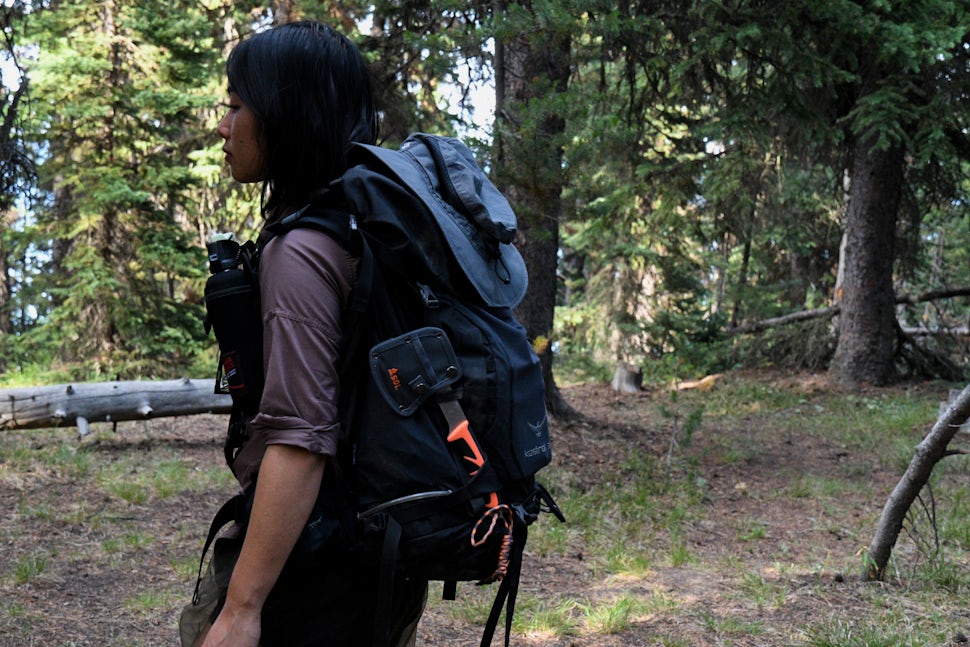Product Review: S.O.L. Stoke Camp Hatchet and Stoke Pivot Knife & Saw
It once took me three hours to start a fire in the rain. Now, I’m prepared to start a fire in any situation. Here’s how.

Presented by S.O.L.
Editor's note: Always be sure you're following the most up-to-date guidance about fire restrictions in the area you're exploring.
It took me three hours on a rainy afternoon on the Olympic Peninsula coastline, dripping wet clothes and cold food, to persuade me to consider researching better gear for lighting a fire. The materials you bring to build a fire make for a better experience.
Whether you’re camping in a sage-brush-filled high desert, next to the sound of crashing waves on a coastline, or in a mossy and misty dense forest, having a fire when you need it most is essential and creates some great memories. The fire materials we bring determine if we’re able to cook our food over a camp stove, provide heat during a brisk night, light up social gatherings, or adjust the evening’s ambiance.
On any cross-country road trip or weekend warrior outing, I spend a lot of time planning what to pack. Yet again, I’m testing out more materials and tools in hopes of it making the perfect campfire in record time. Nothing seemed to work.
And that’s when the S.O.L. Stoke Camp Hatchet and S.O.L. Stoke Pivot Knife and Saw found a spot perfectly in my camping essentials. Each set contains a cover to keep me safe and the stainless steel sharp and ready to use, a flint fire starter, and a tinder cord lanyard. The Camp Hatchet includes a rope cutter and three sizes of hex wrenches useful for various upkeep around the campsite or the house. The Pivot Knife and Saw contains a 3.9 inch straight blade and 4.25 inch serrated saw, perfect for use as a multipurpose tool.

Both tools are lightweight and packs perfectly inside of my backpack pockets. This gives me easier access to the tools I need to start a fire once I get to my campsite. Having a flint fire starter is a great tool in any environment I find myself in. Since it’s waterproof, I don’t have to worry about keeping fire-starting materials dry, stock up on various matches, tinder, or the classic laundry lint emptied of the dryer the night before.

The need to spend more time than necessary to generate a fire is dwindling. So are the number of nights spent camping in the cold and having conversations in the dark!
An afternoon at Yellowstone Lake provided the perfect opportunity to use my S.O.L. tools to build a fire using old logs found in some fire pits dispersed throughout the campsite. The sparse Lodgepole pine forests that line the shoreline consist of downed trees for ample dry wood to create some tinder. The hatchet was efficient in breaking larger pieces of wood into different sizes, and the saw was useful in splintering the wood into tinder. After a few minutes of stacking the wood, I was ready.

Then, with a swift motion of the knife blade against the friction of the flint fire starter, I created a fire.

So, the next time I find myself in a cold and cloudy forest in the Pacific Northwest or the high elevation in the Rocky Mountains, I am more confident in building the perfect fire.
We want to acknowledge and thank the past, present, and future generations of all Native Nations and Indigenous Peoples whose ancestral lands we travel, explore, and play on. Always practice Leave No Trace ethics on your adventures and follow local regulations. Please explore responsibly!
Do you love the outdoors?
Yep, us too. That's why we send you the best local adventures, stories, and expert advice, right to your inbox.








